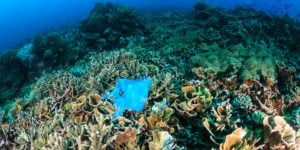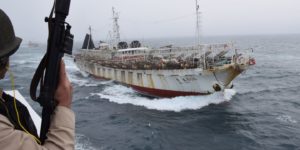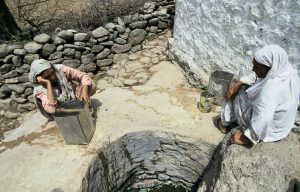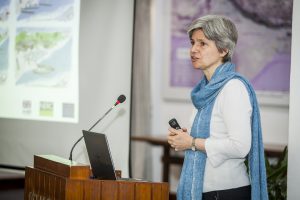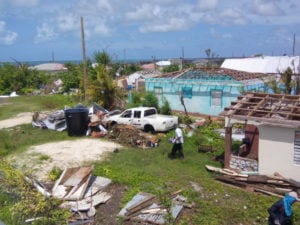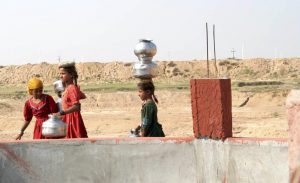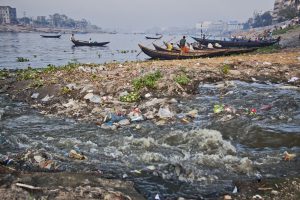More than 150 scientists, environmentalists and other campaigners have written to Brazilian president Michel Temer alerting him of his “grave mistake” in excluding biodiverse islands in two new marine conservation units that he announced via video link at the Economist World Ocean Summit in Mexico last month.
The government changed the demarcation of the marine protected area (MPA), days before the president announced that Brazil’s total protected waters would expand from 1.5% to 25%, say researchers who worked on it. The expansion means Brazil easily meets Aichi Target 11, an international agreement requiring protection of at least 10% of a country’s marine and coastal areas by 2020.
These areas concentrate 80% of species living in reefs and it is these that need greater protection.
“It is certainly a step forward, but the proposals are entirely out of line,” says Hudson Pinheiro of the California Academy of Sciences.
Pinheiro, who proposed the inclusion of the five-island archipelago of Trindade and Martim Vaz, off the coast of Brazil’s Espirito Santo state north of neighbouring Rio de Janeiro, says the islands – which are home to endangered species – were taken out of the MPA. “These areas concentrate 80% of species living in reefs and it is these that need greater protection.”
Trindade consists of 30 seamounts on a 10 kilometre-squared cluster of volcanic islets. It is situated 1200 kilometres from Espiritu Santo’s capital Vitória, on the same line of latitude. 270 species of fish live on the reefs, and 24 are threatened with extinction. The waters around the islands have one of the highest rates of marine biodiversity in the Atlantic Ocean.
Fishing concerns
Pinheiro says the Brazilian Navy, which has a small base on the island, pressured the government to remove the islands from the protected area so it can continue fishing there. He also claims tonnes of fish are stored there though he was unable to clarify whether such large quantities of fish are for feeding personnel or for sale.
There are 213 species; 19 of these are at risk of extinction. One species is already extinct.
When studies were conducted in the region for the draft conservation project, Pinheiro says he heard reports of an “enormous” number of boats carrying the flags of Asian countries fishing around the island.
The new demarcation means that insular and more shallow areas of the islands lie outside full protection zones. These are fundamentally important for conserving the “fragile and unique biodiversity,” researchers wrote in the letter to the president.
Conservation ‘compromised’
Even though the marine conservation units protect an area equivalent to 92 million hectares, the removal of the islands from the proposed area and the tiny Saint Peter and Saint Paul Archipelago, just north of the equator some 900 kilometres off Brazil’s north-eastern coast, “strongly compromises” their conservation.
Saint Peter and Saint Paul is the smallest and most isolated tropical archipelago in the world, there are 213 species; 19 of these are at risk of extinction. One species is already extinct.
“The great cannot be the enemy of the good,” said Angela Kuczach, president and director of the NGO National Network For Conservation Units (Rede Nacional Pró Unidades de Conservção) the near 92 million hectares of protected area. Even so, she expressed “surprise” that the presidential decree was not as agreed.
Kuczach says that in the case of Saint Peter and Saint Paul the Navy maintains contacts with a commercial fishing company, Transmar, which brings researchers to the archipelago’s scientific research station.
The Navy pays for this transport, since it maintains national sovereignty over the archipelago. By keeping the island constantly occupied by civilians, Brazil is in compliance with the United Nations Convention on the Law of the Sea (UNCLOS) and incorporates the area into its Exclusive Economic Zone (EEZ).
“The protected ocean areas are a way of ensuring the sovereignty of the islands and archipelagos,” says Kuczach.
The government and Navy have up to 180 days from the date the degree was published to prepare a management plan for these protected areas. “I hope that at least they will be strict in this management plan,” Pinheiro says.
Kuczach adds that in order for the management plan to be successful, the government and researchers “need to work together.”
Dialogo Chino contacted office of the president, the Ministry of the Environment, and the Brazilian Navy, but had received no official response at the time of writing.

